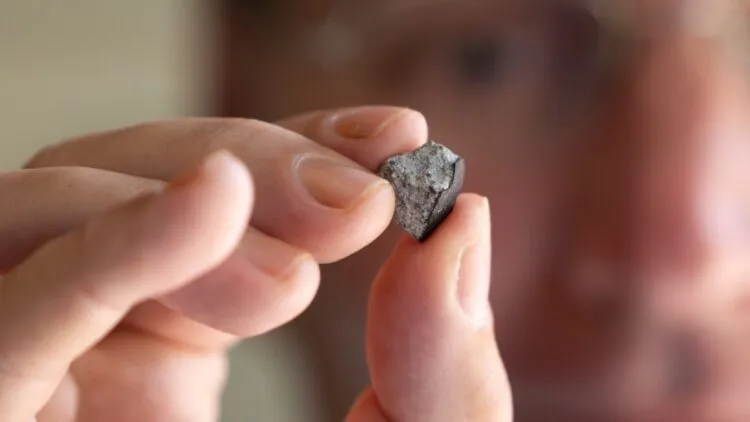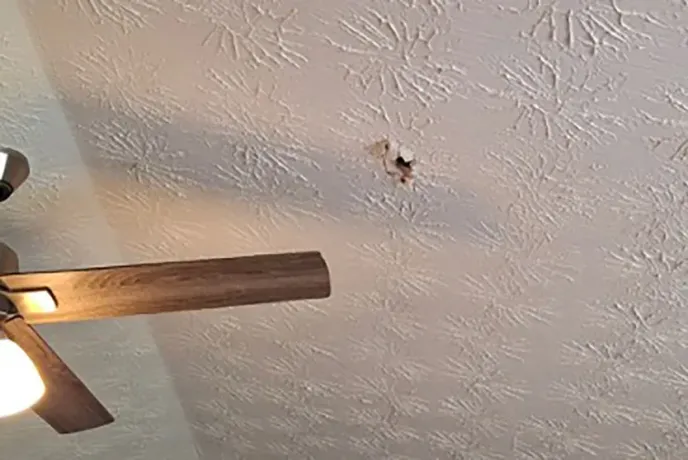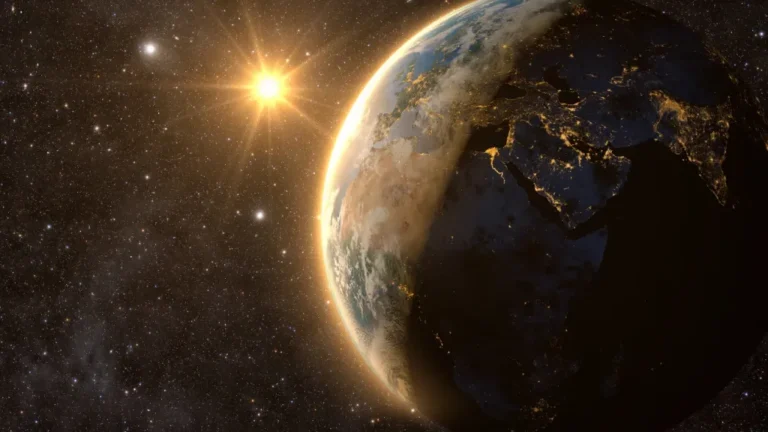A 4.6 Billion-Year-Old Meteorite Nearly Hits Georgia Man in His Living Room

Imagine you’re at home on a typical Thursday afternoon—headphones on, working through emails, minding your own business. Suddenly, you hear what sounds like a gunshot next to your head. You look up and find debris raining down in your room and a fresh hole in both your ceiling and floor.
This is exactly what happened to a McDonough, Georgia resident on June 26, 2025. What started as a quiet day turned into an encounter with a 4.56-billion-year-old space rock that had been traveling through the cosmos long before Earth even existed.
A Day Like No Other
It all began when, around midday, people across the Southeast started reporting something extraordinary—a brilliant fireball streaking through the sky. Unlike most shooting stars that burn up harmlessly, this one had different plans.

The meteorite traveled fast enough at an angle that it was able to pass through a homeowner’s roof, ductwork and ceiling.
Courtesy University of Georgia
The American Meteor Society recorded 241 reports from witnesses across Georgia, Florida, North Carolina, South Carolina, Tennessee, and even Arizona. What they were witnessing wasn’t just any meteor. It was a massive chunk of asteroid, about three feet wide and weighing a ton, making its final descent after an epic journey through space that began long before Earth, trees, or life itself even existed.
The National Weather Service in Peach County first suspected earthquake tremors but soon realized it was the sonic boom of the space rock as it tore through the atmosphere at hypersonic speed.
A Close Call Like No Other
While hundreds of people marveled at the fireball, one McDonough resident got the full experience. The meteorite didn’t burn up in the sky—it punched through his roof, tore through the ceiling and ductwork, and slammed into his living room floor with enough force to leave a dent twice the size of a quarter.
Dr. Scott Harris, a planetary geologist at the University of Georgia, describes this as a “triple sensory assault.” “The homeowner experienced three simultaneous events: the impact with the roof, a sonic boom, and the collision with the floor, all happening at once,” he said.
Despite wearing noise-canceling headphones, the homeowner described it as sounding like a gunshot fired at point-blank range. The impact was so intense that part of the meteorite turned to dust upon contact, and weeks later, the homeowner was still discovering tiny particles of space dust scattered around his living room.
A Cosmic Relic
Now, here’s where the story gets mind-boggling. When Dr. Harris and his team analyzed the 23 grams of meteorite fragments recovered (totaling 50 grams), they discovered they were holding something extraordinary.
The meteorite was classified as a Low Metal Ordinary Chondrite, a type of rock that’s about 4.56 billion years old—older than Earth itself by 20 million years.
“When this rock formed in space, Earth didn’t even exist yet,” Harris explained. At that time, the solar system was a chaotic disk of gas and dust slowly coming together to form planets.
This particular rock originated from the asteroid belt between Mars and Jupiter, where it was part of a larger asteroid. About 470 million years ago, a massive collision shattered the asteroid, sending fragments like this one into Earth-crossing orbits. For millions of years, this piece of rock circled the sun, occasionally crossing Earth’s path, but it wasn’t until June 26, 2025, that it finally made its way to McDonough.
The Rarest Kind of Houseguest
While NASA estimates that thousands of meteorites fall to Earth every year, most go unnoticed, landing in oceans or remote areas. The odds of a meteorite hitting a building are astronomically small. In fact, there’s only one other case in history where a meteorite struck a person. On November 30, 1954, a nine-pound meteorite crashed into a home in Sylacauga, Alabama, and struck Ann Hodges, leaving bruises but no serious injuries.
The McDonough homeowner was incredibly close to becoming the second person in recorded history to be struck by a meteorite. At just 14 feet away, his near-miss highlights just how unlikely it is for a person to be hit by a space rock.
Georgia’s Meteorite Magnet
Interestingly, this wasn’t the first time Georgia has experienced a meteorite fall. The McDonough meteorite is the 27th meteorite recovered in the state and the sixth witnessed fall. According to Dr. Harris, this frequency is actually quite rare for the region.
“This is something we used to see once every few decades, but with modern technology and a more attentive public, we’re finding more meteorites than ever,” Harris said. Social media, dashboard cameras, and security systems are making it easier to capture these spectacular events, with people now sharing videos of fireballs as they streak across the sky.
More Than Just a Story
While the McDonough meteorite makes for an incredible anecdote, it’s also offering scientists a treasure trove of information about the early solar system. The meteorite contains clues about the conditions when planets were forming, the materials that went into creating Earth, and the violent processes that shaped our cosmic neighborhood.

Fragments of a meteorite that are being analyzed by University of Georgia researcher Scott Harris.
Andrew Davis Tucker/University of Georgia
Dr. Harris plans to publish research detailing the meteorite’s composition, speed, and impact dynamics. This kind of research not only satisfies scientific curiosity, but it also helps prepare for potential future encounters with larger, more dangerous asteroids.
The Meteorite’s New Home
The McDonough meteorite, named after the ZIP code where it was found, is now housed at the University of Georgia for further study. Additional fragments from the area will eventually be displayed at the Tellus Science Museum in Cartersville, allowing the public to see a piece of space history up close.
A Humbling Cosmic Reminder
This remarkable event serves as a vivid reminder of the vastness of the universe. While we focus on the daily grind of life, the cosmos is busy moving, sometimes colliding with our world in the most unexpected ways.
As Dr. Harris puts it, “The energy released upon hitting the floor was enough to reduce part of the material to dust.” That’s the kind of guest that leaves an unforgettable impression—literally and figuratively.
Next time you look up at the night sky, remember the McDonough meteorite. Right now, countless ancient rocks are silently orbiting the sun, each carrying billions of years of history and possibly on a collision course with our planet. The universe has an uncanny sense of timing, and sometimes, it shows up in your living room.






